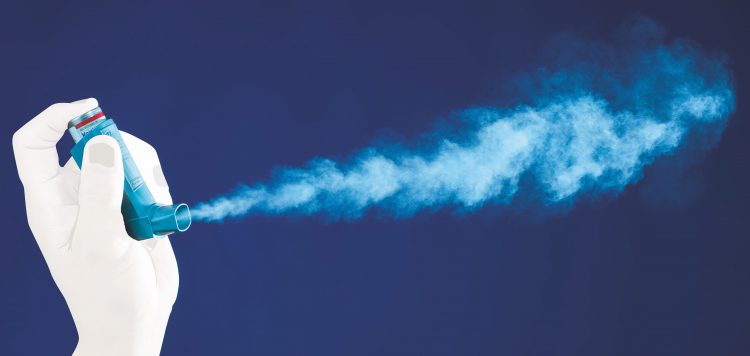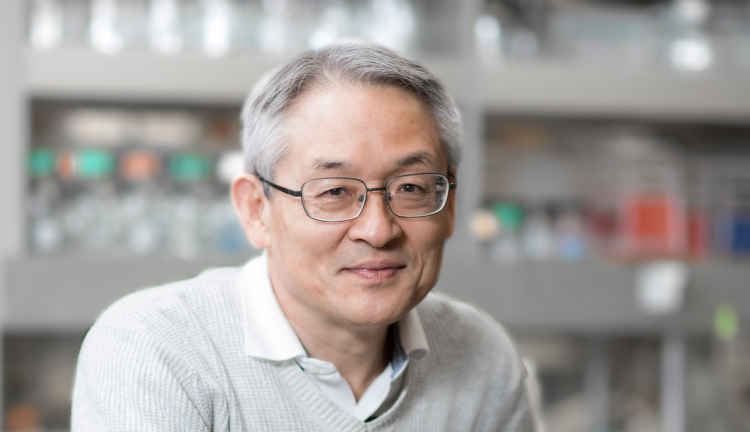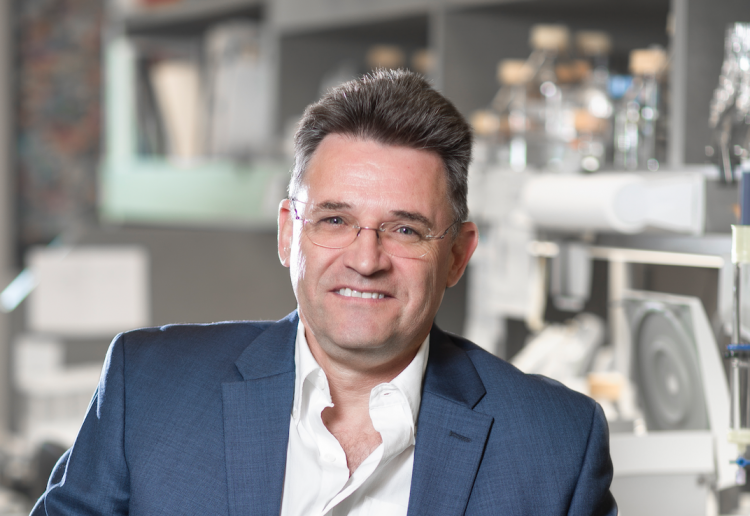Unless you have experienced an asthma attack first-hand or know someone who has, you may believe asthma is simply a disease that makes it hard to breathe. Nothing could be further from the truth. Asthma is a terrifying and debilitating ailment that has no cure, afflicts 300 million people around the world, and kills 400,000 each year.
Asthma is caused by an inappropriate and overly vigorous immune or inflammatory response to harmless environmental agents. La Jolla Institute has taken asthma seriously as a global health problem for two decades, and as a result, made significant progress in understanding how cells and proteins of the immune system drive this chronic inflammatory lung disease.
Most recently, the groundbreaking work of three pioneering Institute principal investigators—each with his own passionate motivation for attacking asthma—has made the Institute one of the leading research centers in the world for studying the disease. A series of significant discoveries could soon lead to important new treatments.

What makes the work Toshiaki Kawakami, M.D., Ph.D., Pandurangan Vijayanand, M.D., Ph.D., and Michael Croft, Ph.D., particularly interesting and potentially even more effective is that the scientists are investigating the disease from three completely different scientific perspectives. As immunologists, what they have in common is they are trying to understand what causes the immune system to produce antibodies and other proteins that set off an unwanted inflammatory reaction that attacks normal body tissues within the lungs.
Whether that inflammatory response is caused by environmental exposure to an allergen like pollen, tobacco smoke, air pollution or dust, or a genetic pre-disposition, the result is the same: bronchial tubes narrow and swell, producing extra mucus which makes breathing difficult and triggers coughing, wheezing, and shortness of breath. Mild to moderate forms of the disease can be managed with steroid inhalers and bronchodilators, but severe forms of the disease resist most therapies and have the potential to result in life-threatening asthma attacks.
As a professor in the Division of Cellular Biology, Dr. Kawakami’s ambition is to have an impact on two issues making asthma an increasingly serious disease: the fact that its incidence is actually growing worldwide and that the cost some of the latest and most effective treatments are so expensive some patients can’t afford them.
Dr. Kawakami, who has made novel discoveries into the causes of food allergies, has discovered that some of the same mechanisms are involved in triggering the inflammatory response underpinning asthma. A few years ago, he and his team discovered that a pro-inflammatory protein called histamine-releasing factor (HRF) activated a receptor expressed on mast cells—a type of white blood immune system cell—and that this plays a key role in unleashing the symptoms of asthma.

“As both a researcher and a physician, seeing our research translated to the clinic to reduce the suffering of asthma patients would be one of the highlights of work in our lab.”
Armed with that information, Dr. Kawakami then identified two peptides that blocked HRF activity and decreased airway inflammation in mouse models of asthma. Dr. Kawakami said the discovery is particularly important because the peptides are inexpensive to produce and would cost a fraction of so called monoclonal antibody therapies that are in use today to treat moderate-to-severe asthmatic patients.
“As always, we have to wait to see if we can produce the same results in human patients, but we’re excited we may have found the basis for a treatment that could potentially deliver extremely effective asthma treatment to many more patients at a much more affordable cost,” Dr. Kawakami says. “As both a researcher and a physician, seeing our research translated to the clinic to reduce the suffering of asthma patients would be one of the highlights of work in our lab.”
To understand the motivation of Dr. Vijayanand, Associate Professor in the Division of Vaccine Discovery and a practicing pulmonologist, you only need to go back a few years to an experience he had when a young woman arrived at the hospital in throes of one of the most severe and heart-wrenching asthma attacks the physician had ever witnessed.
“She arrived in critical condition because her lungs had shut down and she literally couldn’t breathe,” recalls Dr. Vijayanand. “We tried everything possible to open up and clear her airways, but the attack had progressed too far and we sadly could not save her.”
For the physician side of Dr. Vijayanand, experiences like that are deeply emotional. Even as his research career as an immunologist has taken off, he still travels to England four times a year to work in a clinic treating patients with lung ailments, including those with all types of asthma. His frustration in not being able to offer any real help or hope to moderate-to-severe asthmatics drives his intense desire to use his research skills at La Jolla Institute to solve the mysteries of the disease and develop significantly improved therapies, if not vaccines, and hopefully someday even a cure.

“As an immunologist, if our research leads to just one effective drug to treat asthma, I have the potential of helping hundreds of thousands if not several million people.”
A major step in that direction came in 2014 when Dr. Vijayanand and his colleagues published a pioneering study in the journal Nature Immunology demonstrating how the use of powerful new genomic tools could identify specific genes that could be targeted to treat asthma. Dr. Vijayanand’s discovery was a key factor in his receiving two large five-year asthma research grants from the National Institutes of Health, including one to study the causes of the disease in children.
“The advances in computational biology and the emerging field of epigenetics—which attempts to determine how genes are turned on and off—are truly thrilling because they are allowing us real insight into what genetics is doing to the immune system and why it’s actually predisposing people to develop the disease,” Dr. Vijayanand says. “It’s also why I invest most of my time in the lab. As much as I enjoy my clinical work, I know that over my career the number of patients I will treat is in the thousands. As an immunologist, if our research leads to just one effective drug to treat asthma, I have the potential of helping hundreds of thousands if not several million people.”
For Dr. Croft, Professor and Head of the Division of Immune Regulation, motivation for advances in his asthma research comes from the knowledge that he is closer to the end of his scientific career than the bginning, and as much as he enjoys unraveling the basic mechanisms of the immune system, today he’s even more interested in seeing his research translated into actual patient treatment.
There’s a good chance he will see that happen. As one of the world’s foremost T-cell biologists, Dr. Croft and his team are making significant progress in understanding why the same immune cells that protect us can also trigger inflammatory diseases like asthma. One of Dr. Croft’s earlier achievements—the discovery of a novel molecular mechanism driving lung inflammation— is the basis for a potential asthma treatment now in human clinical trials.
In a recent and equally groundbreaking discovery, Dr. Croft has found a way to counteract airway wall thickening and tissue scarring, known as fibrosis, seen in many of the most severe asthmatic patients. In a study published in the journal Nature Medicine, Dr. Croft found that activity of a pro-inflammatory protein called LIGHT, which is made by T cells, increases airway wall thickness and fibrosis. These changes are thought to be the primary causes of the decline in lung function in severe asthmatics.

“For me personally, this may be the most exciting time in my career because I can finally see that all the hard work on basic research that we’ve invested all these years may soon pay off with the most important result of all, and that’s providing effective treatments that truly change the lives of patients who every day have to battle asthma and other serious diseases.”
More importantly, Dr. Croft’s lab has since discovered that when mice that display symptoms of severe asthma were treated with drugs that block LIGHT, they showed significantly less airway wall thickening and fibrosis. Dr. Croft believes LIGHT inhibitors may be effective in reversing the tissue destructive effects of fibrosis, not only in asthmatic lungs, but in other diseases that affect the lung and/or the skin, like chronic obstructive pulmonary disease, idiopathic pulmonary fibrosis, scleroderma, and eczema. Drugs targeting LIGHT are now in safety trials and could be used in the future in patients with fibrosis.
“I believe our work has massive potential beyond treating asthma,” Dr. Croft says. “The ability to understand and manipulate extremely strong inflammatory responses could well translate to other autoimmune diseases. For me personally, this may be the most exciting time in my career because I can finally see that all the hard work on basic research that we’ve invested all these years may soon pay off with the most important result of all, and that’s providing effective treatments that truly change the lives of patients who every day have to battle asthma and other serious diseases.”

